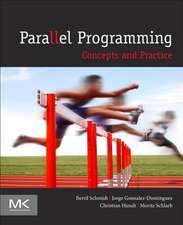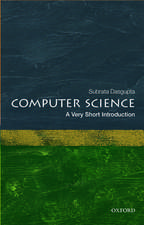Two- and Three-Dimensional Patterns of the Face
Autor Peter W. Hallinan, Gaile Gordon, A. L. Yuille, Peter Giblin, David Mumforden Limba Engleză Paperback – 2 dec 2019
| Toate formatele și edițiile | Preț | Express |
|---|---|---|
| Paperback (1) | 447.30 lei 6-8 săpt. | |
| CRC Press – 2 dec 2019 | 447.30 lei 6-8 săpt. | |
| Hardback (1) | 437.68 lei 6-8 săpt. | |
| CRC Press – 15 iun 1999 | 437.68 lei 6-8 săpt. |
Preț: 447.30 lei
Preț vechi: 559.13 lei
-20% Nou
Puncte Express: 671
Preț estimativ în valută:
85.60€ • 89.48$ • 72.33£
85.60€ • 89.48$ • 72.33£
Carte tipărită la comandă
Livrare economică 07-21 martie
Preluare comenzi: 021 569.72.76
Specificații
ISBN-13: 9780367447588
ISBN-10: 0367447584
Pagini: 272
Dimensiuni: 152 x 229 x 14 mm
Greutate: 0.45 kg
Ediția:1
Editura: CRC Press
Colecția A K Peters/CRC Press
ISBN-10: 0367447584
Pagini: 272
Dimensiuni: 152 x 229 x 14 mm
Greutate: 0.45 kg
Ediția:1
Editura: CRC Press
Colecția A K Peters/CRC Press
Public țintă
Professional Practice & DevelopmentCuprins
1. Faces from a Pattern-Theoretic Perspective 2. Overview of Approaches to Face Recognition 3. Modeling Variations in Illumination 4. Modeling Variations in Geometry 5. Recognition from Image Data 6. Parabolic Curves and Ridges on Surfaces 7. Sculpting a Surface 8. Finding Facial Features from Range Data 9. Recognition from Range Data 10. What's Next?
Notă biografică
Hallinan, Peter W.; Gordon, Gaile; Yuille, A. L.; Giblin, Peter; Mumford, David
Descriere
This book deals with a case: the elucidation of the intricate and detailed patterns of the human face using the tools of 'pattern theory', of statistical pattern recognition and of differential geometry. It is an outcome of the work at the Harvard Robotics Laboratory in the early 1990s.

























